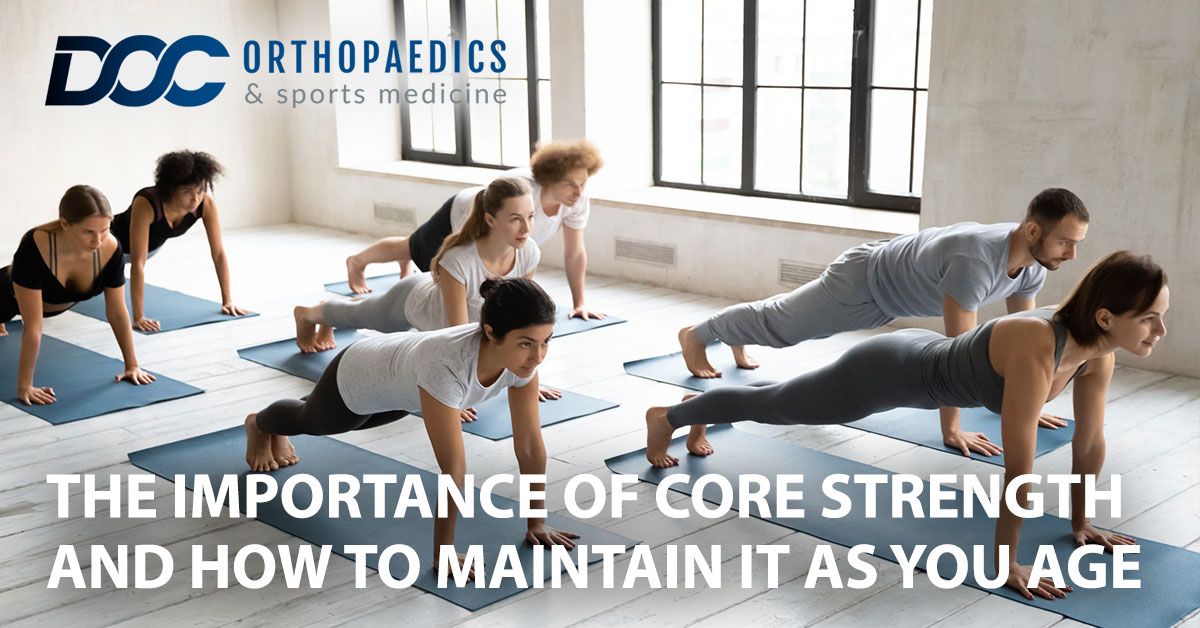
Anatomy of the Core: More Than Just a Six Pack
Anatomy of the Core: More Than Just a Six Pack
As we age, strength training becomes more about flexibility and mobility and less about aesthetics. For example, the phrase “core strength” may conjure an image of finely sculpted abdominal muscles, the proverbial “six pack.”
The fact is your core is more than just those surface muscles. It’s a complex group of muscles that work together to create stability and preserve proper body alignment. The core is responsible for stabilizing your spine, pelvis, and rib cage to maintain proper posture and prevent injuries, especially in weight-bearing activities. That’s why maintaining optimal core strength is so important as we get older.
Why core strength is important
Here are just a few of the reasons core strength is so important, particularly as you age:
- A strong core acts as a natural corset, supporting your spine and promoting good posture. As we engage in daily activities or more intense exercises, the core prevents excessive strain on the spinal discs, reducing the risk of herniated discs.
- On the other hand, weak core muscles can lead to imbalances, increasing the chances of injury. By improving core strength, you enhance stability and reduce the risk of strains, sprains, and overuse injuries.
- A well-developed core provides a solid base, allowing you to perform movements with greater control and reducing the risk of falls, particularly in older adults.
- A strong core can be a game-changer in physical activity, whether you’re an athlete, a fitness enthusiast, or a weekend warrior. It enhances your ability to generate power, transfer force between different body parts, and maintain optimal form during workouts, leading to improved overall performance.
- Core strength also directly impacts everyday activities like lifting, bending, twisting, and reaching. A robust core ensures you can perform these movements efficiently, without straining the spine or other joints.
How to build core strength
It’s never too early to start focusing on building core strength. But, as with any exercise routine, it is important to start slowly and gradually, increasing the difficulty of the exercises as you get stronger. Of course, you should also consult with your doctor before starting any new exercise program, especially if you have any underlying health conditions.
Once you’re ready to get started, here are a few helpful guidelines to maximize your efforts:
- Focus on stability, using stability balls, resistance bands, and incorporating balance-focused movements.
- Gradually increase the intensity, duration, or resistance of your core exercises to continually challenge and strengthen the muscles.
- Focus on engaging the core muscles consciously during exercises to ensure proper activation and maximal benefits.
- Consistently incorporate core-focused exercises into your workout routine at least 2-3 times a week to see noticeable improvements over time.
What’s the next step?
Core strength is a crucial component of overall orthopaedic health, helping you stay active and preventing injury as you age. By understanding the anatomy of the core, embracing its benefits, and adopting targeted training techniques, you’ll be investing in the long-term health of your entire body.
If you’re ready to get started improving your overall core strength – or if you’re just not sure where to begin – it may be time to consider a visit with a specialist at DOC Orthopaedics and Sports Medicine. The physicians at DOC Orthopaedics can work with you to help incorporate core strength exercises into your daily routine, taking into consideration your current physical health and your overall goals for strength and mobility.

